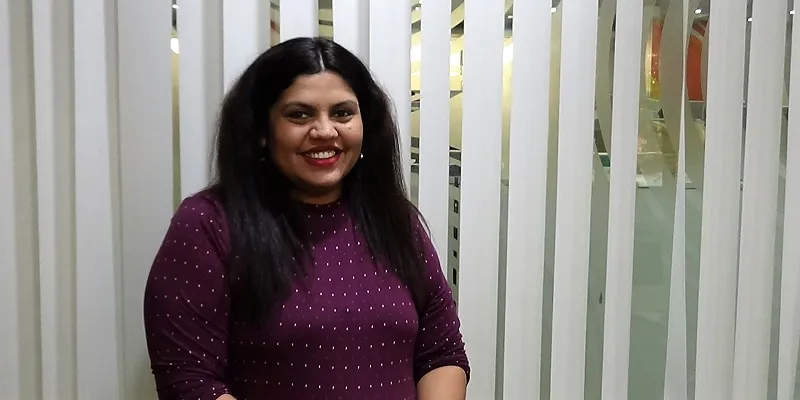WOOP takes on marketing for impact with a cause – education of the girl child
The WOOP platform taps social media influencers to help companies and brands market their products, and is leveraging the network to raise funds for Nanhi Kali.
In the digital world, everyone a data set. Not all, though, understand that when it comes to marketing. Companies and brands usually take on a carpet-bombing approach, and there is no consideration or thought for the consumer.
This is where Rashi Mittal, who had worked in the marketing department of FMCG giant Proctor & Gamble decided to make a mark with WOOP. Her Co-founder Asit Gupta has more than 24 years of marketing experience across India, Russia, the UK, China.

The startup, launched in 2017, focuses on measuring customer voices, especially those of women on the internet. It then bridges the gap between women, social causes and brands by providing brands a platform to be a part of peer-to-peer conversations. It helps bands deepen their engagement with everyday influencers and brand advocates.
WOOP currently has a community of two lakh influencers and aims to grow this to 20 lakh by 2022. It also aims to help educate over 70,000 girls.
“Millions of women in India are spending more than an hour every day on social channels sharing their views and updates with friends. At the same time, brands are trying to interrupt and get the attention of these women with digital ads and paid influencers, but they suffer from low engagement. Having worked at P&G and in influencer marketing, I knew brands would love to be part of these peer-to-peer conversations,” says Rashi.
She says Asit took on to merge their passion for word of mouth marketing with educating the girl child. WOOP enables brands to get genuine peer-to-peer advocacy. Women get to help by sharing meaningful information earn rewards from WOOP. The platform leverages its network to generate funds for organisations like Nanhi Kali, run by the Mahindra & Mahindra Group, to educate the girl child.
WOOP's business model
WOOP stands for 'Women of Opinion' and is a digital-engagement platform for brands, consumers and society.
Rashi explains that less than 40 percent people trust ads, and less than 2 percent click on digital ads. Consumers trust recommendations from friends and family 2.5 times more than brand advertising. WOOP helps with authentic consumer advocacy (recommendations, reviews, referrals etc.), at scale, thus improving the marketing ROI.
Social cause
Over 20 million girls in India are denied education. Educating the girl child has a positive ripple effect on the overall health and prosperity of the society and nation. WOOP creates a sustainable source of funding for education of the girl child by tapping into the existing pot of funds from companies. Till date, WOOP has helped create over 160,000 school days for young girls through its partner Nanhi Kali.
“We make it easy for brands to identify their real consumer advocates, engage with them deeper and create a community of brand advocates in the long-run,” says Rashi.
Brands currently pay for every engaged user on WOOP. A user in the community will engage with several brands in a year, and this is monetised multiple times. WOOP has also created a gamified platform where women exchange their time for rewards.
The company has 20 paying clients, including Kaya and Cipla.
The challenges
The company is currently bootstrapped, and its monthly burn is around Rs 9.5 lakh. “We are likely to start meeting our overheads in two months. In our first year, the company was supported by funds from Asit’s other venture, Advocacy, to the tune of Rs 40 lakh. “We are currently looking for our first angel investor. We need Rs 3.5 crore to further improve our product and community offering,” says Rashi.
The biggest challenge in building WOOP was convincing clients about the power of building a sustainable community of brand advocates. “We don’t intend to replace clients’ CRM strategies but want to further amplify them. WOOP is better than traditional CRM for many reasons,” she adds.
WOOP has been associated with companies such as Philips Avent, Cipla, Glenmark Pharma, Abbott, Kimberly Clark, Eureka Forbes, Kaya, JCB Salons, Swiggy, MamaEarth, 18 Herbs, Nobel Hygiene, and Merck among others.
While the business has scaled in terms of customers, WOOP is yet to cross $2 million in revenues.
Brands spend Rs 9,600 crore on Digital Media/Advertising every year (2017 estimate - IAMAI & IMRB Study). “We are competing in the earned media space, which accounts for roughly 10 percent of the total spend in other markets. So, our marketing size is estimated to be Rs 970 crore and growing at 30-40 percent per year, which is the same rate as the rest of digital media spend,” says Rashi.
Her company competes with Viral Nation, HireInfluence, 6Degrees, Mediakix and Amplify. While influencer marketing is a big thing these days, what is important to note there are no $100 million influencer marketing companies from India. Perhaps that's because the market is still nascent. Daniel Wellington and HiSmike are some of the companies that have achieved those revenues globally.
According to Mediakix, the influencer marketing industry can be a $10 billion industry. Rashi and Asit have attempted to address the opportunity in this market, and the only question now is if they will scale up fast with revenues.







